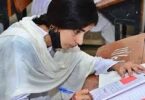F.P. Report
PESHAWAR: Established in 1913 at the foothills of Koh e Sufaid, Islamia College Peshawar (ICP), which has held aloft the torch of educating the people of Khyber Pakhtunkhwa for the past 110 years, also saw the historic independence movement of Pakistan.
One travelling through the historic Jamrud Road can’t remain unimpressed while passing under the shadows of its tall domes, lush-green lawns and majestic edifice of its beautiful architecture. It reminds visitors of the glorious role its students played during the Pakistan Movement led by father of the nation, Quaid-e-Azam Muhammad Ali Jinnah.
“The history of Pakistan Movement is incomplete without mentioning the role of the students of ICP,” said Younas Khan, Chairman Pakistan Studies Department, ICP while talking to APP on Thursday.
He said the legendary Quaid visited ICP in 1936, 1945 and 1948 to acknowledge the outstanding role of its students during completion of his mission for Pakistan.
On April 12, 1948, Quaid-e-Azam visited ICP as first Governor General of Pakistan where he presented glowing tributes to the services of its students towards making Pakistan in these words.
“I am indeed very happy to be present here today and to have the privilege of addressing students of this great Darul Uloom, who are the future builders of Pakistan. Remember your government is like your own garden. Your garden flourishes by the way you look after it and the efforts that you put towards its improvement. Similarly, your government can only flourish by your patriotic, honest and constructive efforts to improve it.”
He wished to construct a university near ICP that was fulfilled by the government within a gap of one year by establishing University of Peshawar in 1949.
Quaid-e-Azam became an honorary member of Khyber Union, a debating society of the college in 1936. The Quaid’s love for the college can be judged from his will written on May 30, 1939 in Mumbay in which he declared ICP, the Muslim University Aligarh and Sindh Madrassatul Islam Karachi as among the inheritor of his property.
“The Quaid Trust has later paid Rs10,811,600 in different instalments to the college. The amount was spent on the establishment of Quaid-e-Azam College of Commerce, University of Peshawar, construction of Jinnah residential quarters for the college employees, Jinnah College for Women and the newly constructed Takbeer block and others projects,” he said.
The college, which is a beautiful combination of the Aligarh and Deoband School of Thoughts, is a mere testimony to the greatness of its Founder, Nawab Sir Sahibzada Abdul Qayyum Khan besides glorious history of strength and commitment.
“The idea to establish a college clicks in the minds of Nawab Sahib and Sir George Roos-Keppel, the then Chief Commissioner NWFP (Now KP) in early 1909 when they met the Pathan students during their visit to the Muslim University Aligarh,” says ex-principal ICP,” Prof G.D. Khilji in his memoirs.
The students requested them either to construct Frontier hostel in Aligarh or a college may be built for them in frontier province. As a token, the students raised some sixty-odd rupees and gave them to Roos Keppel to form a Frontier Hostel Fund or any other project.
Keppel later passed the money on to Nawab Sahib, who gave it to his personal servant Habibullah, who always accompanied him.
It was April 12, 1911 when philanthropists Ghulam Haider Khan, Habibullah Khan, Khushal Khan, Sethi Karim Bakhsh and Sahibzada Abdul Qayyum had gathered at the house of Abdul Karim Khan Indrabai in Peshawar in a social gathering. Habibullah, who was also there, reminded his master of the sixty-odd rupees and Nawab Sahib floated the idea to establish a college at Peshawar.
Karim Bakhsh Sethi offered to build a mosque while Rahim Shah Kakakhel promised to construct a hostel known as Rahim Shah Ward. Abdul Karim donated Rs.10,000, Sethi Karim Bakhsh Rs.50,000 and the Nawab of Dir promised Rs.100,000.
Besides, the subscription of Afridi chiefs, an example was set by Bibi Gul, widow of Khairullah Khan of Prang, who offered her ornaments on June 6, 1911 towards the college fund.
Later, a 10-member ad-hoc college committee under the chairmanship of Col. Muhammad Aslam Khan was setup on May 29, 1911 to table proposals for establishment of the college. Leading Khans and Ulema were invited and seven resolutions including to call the proposed college as ‘Darul-Ulum-i-Islamia Suba-i-Sarhad’ were unanimously passed.
A committee was also constituted to select suitable site for the college. The proposal to set up the college at Wazir Bagh was rejected by Ross Keppel to spare the place of recreation.
The second option selection of Larama, about three miles north of Peshawar could not materialize as people refused to donate the land.
Other proposals were Rajjar in Charsadda and Darmangi on Michani Road while Mian Rahim Shah Kakakhel offered to give land on bank of River Kabul but non of these were accepted.
Sahibzada Abdul Qayyum in consultation with Ross Keppel selected the existing place for the college.
The land chosen for the college was the property of Khalil tribe of Tehkal. A total of 916 kanals and seventeen marlas were bought at Rs.30 per kanal. To foil the negative propaganda against the establishment of the college, renowned religious scholar and freedom fighter, Haji Sahib of Turangzai was requested to lay the foundation stone of the college mosque and attached Collegiate School in 1911.
Sir Spenser Harcourt Butler, education member of the Viceroy’s council on April 5, 1913 performed the opening ceremony of Islamia Collegiate School. Later, the Islamia College was opened on October 1, 1913 with 26 students on roll.
Sahibzada Khurshid was the first admitted student who in 1949 became the Governor of then NWFP. Initially, the college had only 10 teaching staff. L. Tipping (1913-17) was its first Principal.
Henry Martin served on the principal post for period of 12 years, nine months and 15 days while Prof. Taj Muhammad Khattak served only for three-month and seven days. Arbab Sikandar Hayat had the distinction to serve the college as its Principal on three occasions.
The college remained closed on few times. First, it was closed for about three-weeks in 1919 due to the second Afghan War and students were shifted to Shahi Mehman Khana, Peshawar.
It was again closed for a few days in 1920 as a result of the Non-Cooperation Movement.
History of the college would be incomplete without mentioning inauguration of the Khyber Union in 1921. Besides many stalwarts, Quaid-e-Azam Muhammad Ali Jinnah, Mrs Eleanor Roosevelt of USA, first Governor of then NWFP Sir Ralph Griffith, renowned writer of Turkiye Khalida Adeeb Khanum, leader of All Indian Muslim League Sir Muhammad Shafi, Pundit Jawahar Lal Nehru, Maulana Abdul Kalam Azad, Governor then NWFP George Cunningham and Sardar Abdur Rab Nishtar are among its honorary members.
According to the Board of Trustees (BoT), the college owns about 544.5 acres of cultivable land in Charsadda, 395 shops and flats in Khyber bazaar Peshawar and in Charsadda.
The college’s clock tower, which now become the pride symbol of Peshawar, has for long figured on the back of Rs.1000 currency note.
ICP is a unique educational institution in Khyber Pakhtunkhwa where students from KG to PhD level was getting quality education and contributing in the prosperity of Pakistan. (APP)







